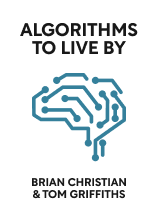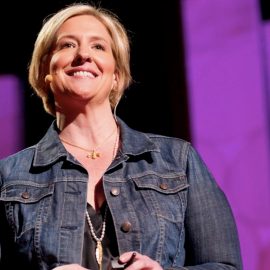

This article is an excerpt from the Shortform book guide to "Algorithms to Live By" by Brian Christian and Tom Griffiths. Shortform has the world's best summaries and analyses of books you should be reading.
Like this article? Sign up for a free trial here .
What is the 37% rule? How can employing the 37% rule help you make better decisions?
The 37% rule is designed to solve something mathematicians call an “optimal stopping problem”—something we often encounter in daily life when faced with a series of options. The 37% can help you settle down and commit to the opportunity in front of you if you don’t know what opportunities will be available in the future.
Here is how the 37% rule settle on a decision and signal when to stop searching for something better.
When to Stop Searching for Something Better
Christian and Griffiths’s first algorithm is: To choose the best from a series of options, explore without committing for the first 37%, then commit to the next top pick you see.
As Christian and Griffiths explain, optimal stopping problems require you to find the ideal stopping point—to know when to settle down and commit to the opportunity in front of you, without knowing what opportunities will be available in the future. For example, imagine you’re looking for a job and know your skills are in high demand. After a couple of days of searching, you receive an offer out of the blue that’s better than any of the available positions you’ve seen so far. However, it doesn’t have everything you’re looking for. Do you take it or keep searching for better options?
Christian and Griffiths argue that the crux of an optimal stopping problem is the trade-off between the information you gain from exploring your options and the increasing risk of passing up the best opportunity. If you take the job and quit searching, you might miss out on a dream job you didn’t know was available. If you pass on the job, you may waste months searching and never find anything better. It doesn’t seem like there’s an easy answer.
| Algorithms Like This May Reduce Decision Fatigue Using a precisely calculated algorithm to make these kinds of life decisions may seem overly restrictive—it doesn’t give you much flexibility to adapt to unusual circumstances. However, Christian and Griffiths’s strict instructions may benefit you by reducing the number of decisions you have to make. Research shows that the decisions you make throughout the day may drain your mental energy, making it more likely that you’ll give in to unhealthy impulses—for example, watching TV instead of going out for a nighttime jog. By cutting decisions out of your life, you preserve mental energy for the decisions that matter. This theory of “decision fatigue” supports Christian and Griffiths’s overall mission with this book: to make life better through algorithms. Once you’ve chosen to follow the predetermined instructions of an algorithm, your decisions have been made for you—in theory, eliminating the mental burden and making your life easier. Imagine you’re faced with the optimal stopping problem of which job to accept. Instead of spending stressful hours weighing an exhaustive list of pros and cons, you can trust that the algorithm will make the best possible decision for you and move on. This way, you’ll be left with more mental energy to spend on other areas of your life. |
The Algorithm and Why It Works
Christian and Griffiths explain how to solve this problem: First, estimate how many opportunities you’ll be offered. If you plan to be job hunting for no more than three months, you can use that timeframe as your baseline. Next, calculate the point exactly 37% of the way through that range. This separates your exploratory period from your commitment period. This would be 34 days into your three-month job hunt.
For the duration of your exploratory period, refrain from committing to any opportunity, no matter how good it seems. You don’t yet have the perspective necessary to determine if it’s truly a good opportunity. Once you enter your commitment period, commit to the next option you find that’s better than any you’ve encountered so far. Christian and Griffiths assert that this opportunity has the statistically highest chance of being the best in the entire range.
| This Optimal Solution Still Falls Short Mathematician Hannah Fry pokes holes in Christian and Griffiths’s strategy, demonstrating how likely it is to fail: If, following the algorithm, you’re unlucky enough to encounter the best available option during your exploratory period, you’d have to reject it and go on to reject every other option available, as none will be better than what you’ve encountered already. Even though Christian and Griffiths are offering a mathematically optimal algorithm, the odds of you finding the best option, she states, are a dismal 37%. Fry does, however, offer a solution. Christian and Griffiths define success as claiming the best opportunity available, but if you’re willing to accept an opportunity that’s good, but not the best, you can vastly increase your chance of ending up satisfied. If you’re okay with an option in the top 5%, for example, you should begin your commitment period just 22% of the way through. According to Fry, this raises your chance of success from 37% to 57%. If you’re willing to accept an option in the top 15%, you can pivot 19% of the way through for a whopping 78% chance of success. |
But Why 37%?
Why do the authors pick 37% as the point to pivot? Christian and Griffiths explain: First, understand that at any point, you’ll want to pick the best option that you’ve seen so far. The more options you consider, the better an opportunity needs to be for it to be the best—you raise your standards, and your final choice will be higher quality. However, since you can’t go back to previously rejected options, your chance of finding good opportunities goes down as the number of options remaining drops.
Christian and Griffiths argue that this situation requires a balance—a point where you’ve explored enough to know high quality when you see it but have reasonable standards that keep you from rejecting your best available options.
By calculating the chance of finding the best option available for every possible time to pivot from exploration to commitment, statisticians have found that 37% of the way through is the best time to pivot no matter how many options there are. This provides a remarkably precise rule of thumb to use whenever you’re unsure when to commit to something.
Additional Instructions
Rule #1: If there’s a chance you’ll be turned down, commit earlier.
Christian and Griffiths explain that if the opportunities in front of you aren’t a sure thing, lower your standards and begin committing sooner. If there’s a 50/50 chance you’ll be refused—for instance, after a job application—start attempting to commit after 25% of your options instead of 37%. The greater the chance you’ll be rejected, the earlier you should start trying to commit.
(Shortform note: Christian and Griffiths stick to the math here and don’t consider that in real life, you can reduce your chance of future rejections by changing your approach, in turn reducing your need to commit sooner. After every rejection, give yourself some time to emotionally recover, then deliberately reflect on what went wrong and try to understand what you could have done differently. Seek advice from others if you need a more objective perspective. If you learn and grow from your rejections, you transform them from a tragedy into a gift.)
Rule #2: If you have measurable information about your options, use a threshold instead.
Christian and Griffiths explain that if you have a metric that allows you to rate each opportunity against an objective scale, your decision becomes much easier. If you’re trying to decide what airline to fly with, for example, you can know the price range typically offered for your destination before exploring your options. This way, you can tell if a ticket price is good without having to directly compare it to other options.
In this case, Christian and Griffiths state that the best course of action is to set a threshold at the beginning of your search and accept the first opportunity that beats that threshold. If the first airline you consider is offering an objectively low price, you don’t need to have an exploratory period at all—buy it!
| The Downside of Objective Metrics As Christian and Griffiths explain, using an objective measurement makes it easier for you to compare options. However, this strategy can easily backfire. If the metric you’re using misaligns with what you’re trying to accomplish, you could end up chasing the wrong goals and sabotaging yourself. For example, if you judge airline tickets based on their price and nothing else, you may find yourself on a cheap but miserable sixty-hour-long string of connecting flights, ruining your vacation. This kind of misalignment is very difficult to spot—humans have a powerful cognitive bias that causes them to equate the metric used to measure a strategy’s progress with the strategy itself. Psychologists have termed this phenomenon “surrogation”: Instead of thinking through what airline ticket will result in the best vacation, you implicitly assume that the cheapest airfare means the best vacation. How can you prevent this from happening to you? Research has shown that using multiple metrics instead of just one greatly reduces the risk of surrogation. When you’re evaluating a series of options, rating them on multiple scales keeps your brain focused on the overarching goal instead of getting attached to any one measurement. |
Rule #3: If exploring has a cost, commit earlier.
Finally, if every additional option you consider comes with a cost, Christian and Griffiths advise you to commit earlier if you expect the best option will cost more to wait for than it’s worth.
For example, if a farmer’s trying to sell a cow, every offer he turns down means he’ll have to continue to pay for its food and care until the next offer comes in. If the expenses of waiting outweigh the additional cash expected from the next better offer, the farmer should commit to selling the cow before the “optimal” time. This is easier to calculate if you have a way to objectively measure your options, as we just discussed.
Christian and Griffiths note that in real life, all optimal stopping problems involve some exploration cost. Every week you go without accepting a job costs you significant living expenses. Additionally, even if there’s no other cost involved, you always incur the cost of lost time. Christian and Griffiths theorize that this perceived time cost is why most people in the real world commit earlier than 37% of the way through their options.
| Memento Mori Many use this idea of the ever-present cost of waiting as the center of their life philosophy. Memento mori, Latin for “remember death,” has in recent years become a rallying cry for those who wish to live life to the fullest. This idea is a central tenet of ancient Stoic philosophy and as such has gained recent popularity alongside the modern Stoic movement. By continually reminding themselves of their mortality, adherents to this philosophy estimate a high cost of waiting and consequently try to commit to the life they want to live as soon as possible. Christian and Griffiths might argue that this attitude has its weaknesses. If you do everything you can to live life to the fullest every day, you could be missing out on other opportunities with value that aren’t immediately apparent. For example, if you remind yourself that you could die at any moment and use that as justification to stay up all night partying seven nights a week, you may find your life less satisfying than if you had taken more time to explore your options, perhaps discovering a love of science and going to grad school. |

———End of Preview———
Like what you just read? Read the rest of the world's best book summary and analysis of Brian Christian and Tom Griffiths's "Algorithms to Live By" at Shortform .
Here's what you'll find in our full Algorithms to Live By summary :
- How to schedule your to-do list like a computer
- Why making random decisions is sometimes the smartest thing to do
- Why you should reject the first 37% of positions in your job search






